2023 | Panorama
Tracking the Unseen - Films as Tools of Resistance.
War, revolution, female self-empowerment and queer relationships – the films in this year’s Panorama find images for the global issues of our time, from tender to explicit, from painful to funny. In this interview, section head Michael Stütz discusses works that use their images to fill gaps, and inspiration as a weapon.
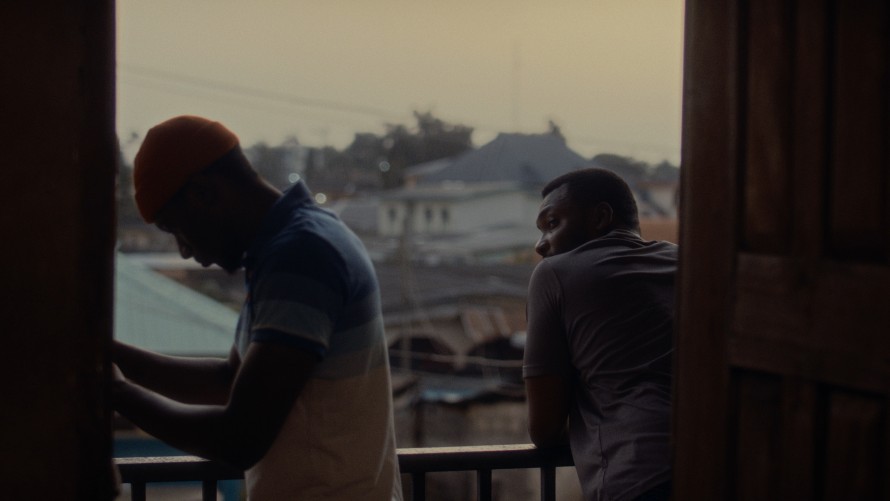
Riyo David and Tope Tedela in All the Colours of the World Are Between Black and White by Babatunde Apalowo
Your programme has a broad range of production countries and locations: films from Nigeria, Burkina Faso, Senegal, Syria, Yemen and Guinea, for example, rarely make it into European cinemas. Did you actively pay attention to such diversity when making your selection, or does it come about “all on its own” due to the films you really want to have in the programme?
It’s a bit of both. Of course, not everything happens by chance or purely intuitively: we’re interested in specific regions and we research and work closely with our delegates from those regions to get the best possible overview. We’re helped immensely by the contacts we’ve established and developed over the years. It’s great to see that 2023 is proving to be another strong year for new cinema from sub-Saharan Africa. When we viewed the films, it was immediately clear that we had to have them in the programme. So it’s a combination of both factors, which I’m particularly happy about. With The Burdened by Amr Gamal, we’re screening one of the very first films from Yemen to be presented at an international festival. We’d already seen the film at rough-cut stage and we were immediately so enthusiastic about it that we fought very hard to bring it to Berlin – which fortunately worked out.
From Nigeria, you have All the Colours of the World Are Between Black and White by Babatunde Apalowo – a film about a homosexual relationship from a country where that is criminalised. How does the film handle this topic?
The narrow social norms are made clear in Babatunde Apalowo’s debut by its visual concept. The film is a special discovery for me and I’m delighted to have another film from Nigeria in the programme this year, following No U-Turn by Ike Nnaebue in 2021. The camera in this new work is mostly static and captures precisely framed images of home, work and the neighbourhood with the shots making the social constrictions very tangible. However, images of the two men drawing closer to each other, in a process that is as tentative as it is gentle, are granted more dynamism and space when the characters undertake trips through Lagos together on Bambino’s moped. Accompanied by music, these moments are usually also temporal transitions in the story that convey hope and movement. The two become flaneurs and, in doing so, they appropriate the urban space. Basically, a very classic cinematic motif which, here, is beautifully interwoven with Nollywood traditions. This ultimately results in All the Colours of the World Are Between Black and White also becoming a film about finding yourself and overcoming internalised barriers; a film that creates images which fill a gap – in both the cinematic and the social consciousness.
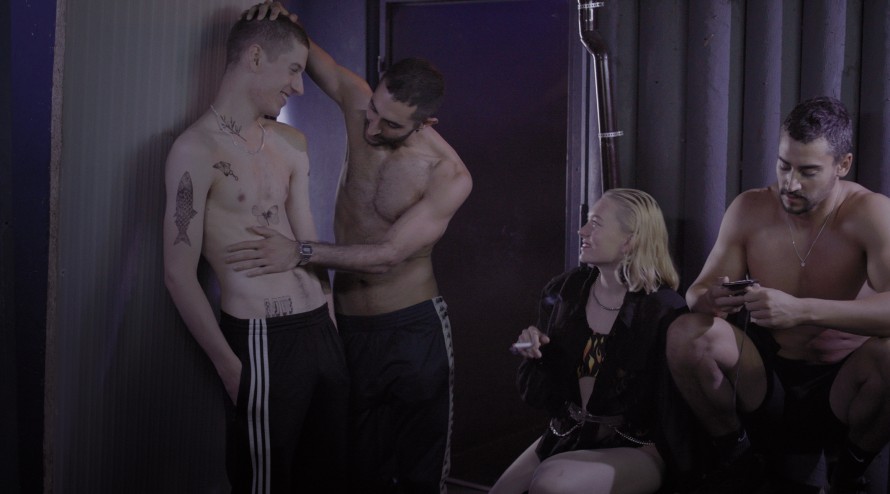
Lorenz Hochhuth, Aviran Edri, Rabea Egg and Karim Alexandre Howard in Drifter by Hannes Hirsch
It’s a very different scenario in Drifter by Hannes Hirsch. Here, a well-worn cliché – that of the (gay) Berlin party scene – comes up for critical analysis.
With a nonchalant casualness, Hannes Hirsch negotiates many elements that are often encountered in the queer party scene. But he also finds images that offer the potential for reflection. The film was developed and made with and from within the community. This is very noticeable in the film, and it’s one of its driving factors – clichés (and Berlin is abundantly blessed with them) notwithstanding. Drifter takes a closer look and creates opposing positions to the familiar stereotypes, the salacious, persistently seducing and glittering surface. Normalised and cherished images of masculinity, and immoderate drug use, are subtly questioned here, without the film taking the moral high ground. It depicts the seductive excess and brings it authentically to the screen, in tactile, tangible and comprehensible ways – which are perhaps the natural enemies of excess? The film adroitly robs the party scene of its magic while at the same time being aware of the beauty of this magic. Drifter seeks out the contradictions and illuminates them but never judges. On a metaphysical level, Hirsch succeeds in picturing the club as a physical space. In skilfully framed medium-long shots, he captures its physical intensity and location – the excesses of the body in the supposed safety of a queer space.
Which, incidentally, brings me to two other films which are also dedicated to nightlife and, above all, to clubs as social spaces: by Anthony Lapia and La Bête de la jungle by Patric Chiha. Both are French productions and, along with Drifter, they form the section’s club triptych. While Drifter gets intimate with the bodies and rooms in medium-long shots, in After, Lapia throws himself directly into the crowd and, with a handheld camera and filming on film, often only shows us mere fragments of bodies. The space becomes ever more abstract and we join in the dance to the pumping techno. While that film’s two protagonists prefer the privacy of the afterparty, the two main characters in La Bête de la jungle, in contrast, remain stuck in this space for decades. With his camera and perspective, Chiha draws further and further away from his eternally pining lovebirds. The location becomes visible in its entirety, time becomes ever more abstract. We slide through the decades. Outfits change, the beat changes from disco to techno. The drugs, the bodies’ convulsions change. And above all this: the never-ending seduction, the waiting, the slowly fading promise. The film is an elegy to the club, a celebration, but also a requiem – a gentle burial.
Soda Jerk’s Hello Dankness doesn’t appear to be such a gentle burial, rather a vociferous reckoning with the most recent chapters of US history. Reality by Tina Satter could also be read as a reaction to the four (long) years of the Trump administration. What both these works also seem to have in common is the building on found material and a simultaneous questioning of it. The moment the material becomes the professed starting point and centre of the films, it grows fragile or open to reinterpretation – is this the power of the material versus the power of interpretation?
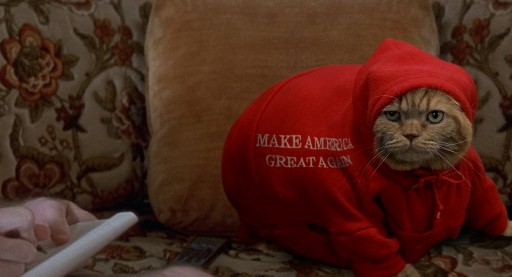
Hello Dankness by Soda Jerk
Both films use a wide variety of cinematic and dramaturgical means to portray the mood of recent US history. With ingenious editing, Hello Dankness manages to hijack the narratives of quite a number of existing works, to manipulate them with fantastic visual effects and thus appropriate them. It’s a wild ride through film history and pop-cultural references, starting with Joe Dante’s The ‘Burbs (1989) starring Tom Hanks. The US suburb as the forecourt to hell, as the political battleground of the election between Trump and Clinton in 2016 – with Bernie Sanders also still having a say. This is a very clear reckoning with Trump’s tenure and with the political establishment. Satire doesn’t necessarily have to be subtle. It can go off with a bang, entertain and push up the tempo. Soda Jerk know this full well and gleefully follow it through right to the end. Reality, on the other hand, interprets the original FBI audio recordings of whistle-blower Reality Winner’s interrogation when she was arrested in 2017. She was charged under the Espionage Act and, in 2018, sentenced to five years and three months in prison for sharing a highly sensitive document. Tina Satter’s debut film is based on the same audio recordings she already used for her off-Broadway play. In Reality, the source is not so much appropriated and manipulated as it is reinterpreted. Satter relies on a minimalist setting in the mise-en-scène and creates an increasingly claustrophobic atmosphere with her actors’ severely limited possibilities of movement. In Reality, even the smallest agitation counts: a red cheek, an uncertain downward glance, an uneasy shifting of the body by the person being interrogated, who is brilliantly embodied by Sydney Sweeney.
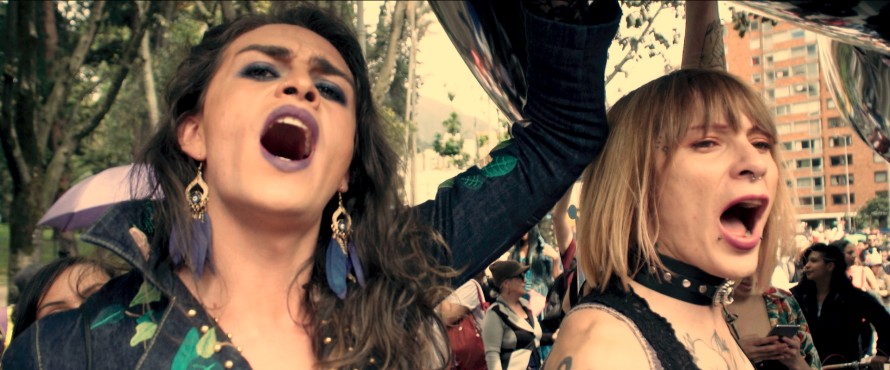
Transfariana by Joris Lachaise
In Stams by Bernhard Braunstein, the young protagonists are observed quietly and at close range; in Transfariana by Joris Lachaise, we watch footage that was self-filmed in prison and some of the protagonists speak directly to camera. What kinds of perspectives are evident in this year’s programme, especially in the documentary forms?
For me, Stams is also the portrait of an institution – a ski boarding school in Tyrol – and a film which almost elegiacally documents and reflects on the sacrifices made by the young people, the fragility of the human body in elite sport and the extent to which it is trained and abused. What’s more, the film is made with great precision and craftsmanship. The sound design alone warrants the need to watch it in the cinema! Transfariana is a fascinating long-term observational project that grants us a glimpse into a part of the FARC that has not previously been seen or discussed outside of the community. The protagonists record themselves and their stories, which are closely intertwined with Columbia’s recent political history. The editing and the positioning of the camera make this film an intense experience for the viewer and, for me, give it an almost hypnotic pull. In addition, the film is a document of queer self-determination by trans activists and sex workers.
Whether it is Iron Butterflies by Roman Liubyi, La Sirène by Sepideh Farsi or Ghaath by Chhatrapal Ninawe: war and revolution are very prevalent in this year’s selection. What sets these films apart and what unites them?
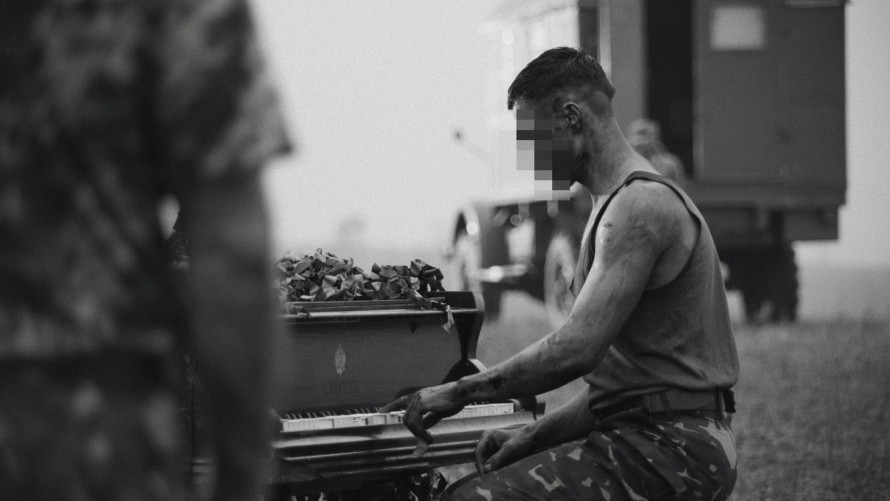
Iron Butterflies by Roman Liubyi
For me, these very different films find a common denominator: they create images and fill gaps in the cinematic and social consciousness. With the help of graphics, maps and animations, Iron Butterflies sets out to illuminate the tragedy and far-reaching consequences of the Russian military’s shooting down of passenger flight MH17 over eastern Ukraine with a very analytical and forensic gaze. In parts, Liyubi’s film is reminiscent of the excellent research and investigations undertaken by the Forensic Architecture group. But it also finds a very necessary human sensitivity for the tragedy of the Russian war of aggression that has been playing out since 2014. La Sirène by Sepideh Farsi, an Iranian living in French exile, uses compelling animation to depict the turmoil of the first Iran-Iraq war between 1980 and 1988. Farsi looks back into the past and also paints a picture of a newly emerging regime that continues to use this war as a justification for its systematic oppression of its people to this day. Ghaath also finds images to make visible the civil war that has been raging for decades between the Indian central government and Maoist guerrillas with an openness and directness that has never been seen before in Indian cinema. In Amr Gamal’s The Burdened, the ongoing civil war in Yemen forms more of a backdrop and is incorporated rather casually into the story. An unwanted pregnancy gets a married couple into real trouble and reveals the economic pressure that is suddenly burdening the so-called middle class. Scarce resources and social claustrophobia are the consequences of the ongoing civil war in the country. All these films address systematic and structural violence and employ their images and mise-en-scène to articulate an opposition, a counter-position. The equipment and spirit serve as tools and weapons. However, it’s not just the content which is making these statements but also the equally strong aesthetics and the way the content is realised. A closer look at the films and their makers results in a painful awareness of their global scope and intersectionality.
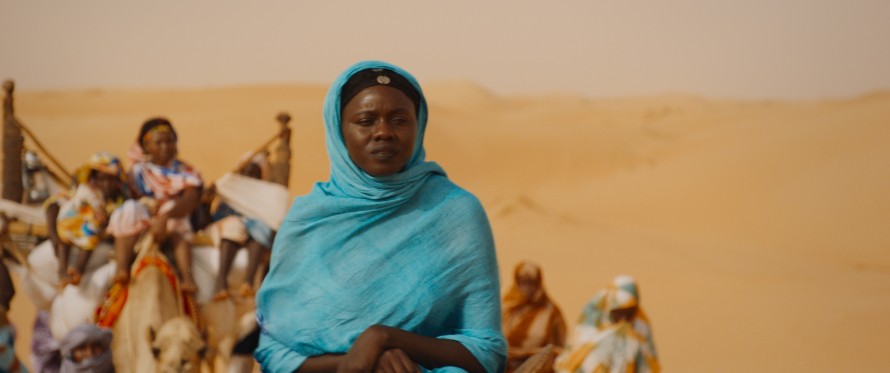
Nafissatou Cissé in Sira by Apolline Traoré
Under the Sky of Damascus by Heba Khaled, Talal Derki and Ali Wajeeh, Sira by Apolline Traoré, Green Night by Han Shuai, Martín Benchimol’s El Castillo and Matria by Álvaro Gago, to name just a few: your programme is full of narratives of female emancipation and self-empowering female characters. Can you tell us a little about the various feminist approaches in the films?
Feminist perspectives and issues are a key part of Panorama and always have been. Under the Sky of Damascus also looks at a country devastated by war – not only from a material but also an intellectual and humanist point of view, and from a decidedly feminist position. Here, the traumata of sexual and physical violence against women are recognised, addressed and reflected on. Nothing becomes real for a society until it is spoken out loud. That is put in a nutshell here. A theatre workshop is used to attempt self-determination by processing and vocalising. The film painfully reveals how often misogyny is internalised by women themselves. Many female characters and directors are dealing with these internalised power and societal structures. The resistance may sometimes be carried out on a small scale and in private, but it seems all the louder for it – as in Matria, for example. Green Night deploys genre elements to take us into the underworld in Seoul where Fan Bingbing and Joo Young Lee follow in the big footsteps of Thelma and Louise to rid themselves of useless freeloaders and exploiters. Apolline Traoré shot Sira, a feminist revenge western, in the Sahel region with an ending that, for me, is totally iconic and should not be missed.
A film that deserves special attention in this context is Jennifer Reeder’s Perpetrator. It is peppered with countless references to genre classics but Reeder also develops an incredibly idiosyncratic film language. The dense, mysterious atmosphere of the film is at least as significant as the narrative. In addition, old myths are interwoven with current discourses. Has Jennifer Reeder perhaps created the feminist film of our time?
I really like that idea, I felt the same when I viewed it. I was already a fan of Reeder and my high expectations were more than fulfilled. Perpetrator is a film that likes to quote others, but it never becomes a mere work of quotations. Jennifer Reeder is creating her own oeuvre and taking liberties that few directors take. She knows exactly what she needs to show, and what not, in order to empower her audience. She shreds old perspectives on genre, horror, feminism, coming of age and queer cinema and then repositions them. It’s a hell of a lot of fun and oozes poise and self-confidence.
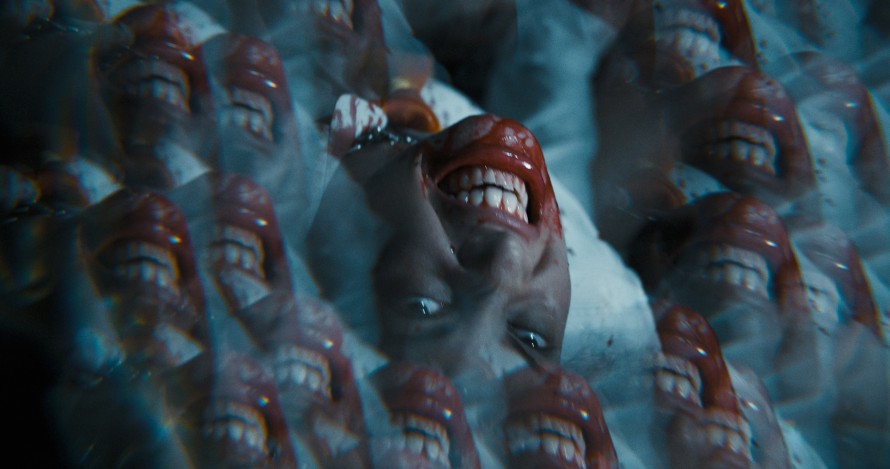
Perpetrator by Jennifer Reeder
Last but not least, are there any works that you think could be viewed as particularly controversial?
Off the top of my head I’d say Passages by Ira Sachs definitely has the potential to provoke and divide the audience. It won’t lead to daggers at dawn but viewers will definitely be put to the test about how much they need a character they can identify with or relate to. Franz Rogowski’s mega-narcissistic character as director Tomas is very provocative. A bisexual stud dressed in see-through crop tops and leopard prints. There’s a bit of a Fassbinder vibe, even if Tomas appears more childishly ignorant than maliciously sadistic. The oft-explored European ménage-à-trois is captured here through an American lens and is more dystopian than utopian. This is the sixth time one of Ira Sachs’ works has been selected for Panorama. With Passages, he is returning to his earlier films with a painful but compelling analysis of relationships and a goodly serving of sex.